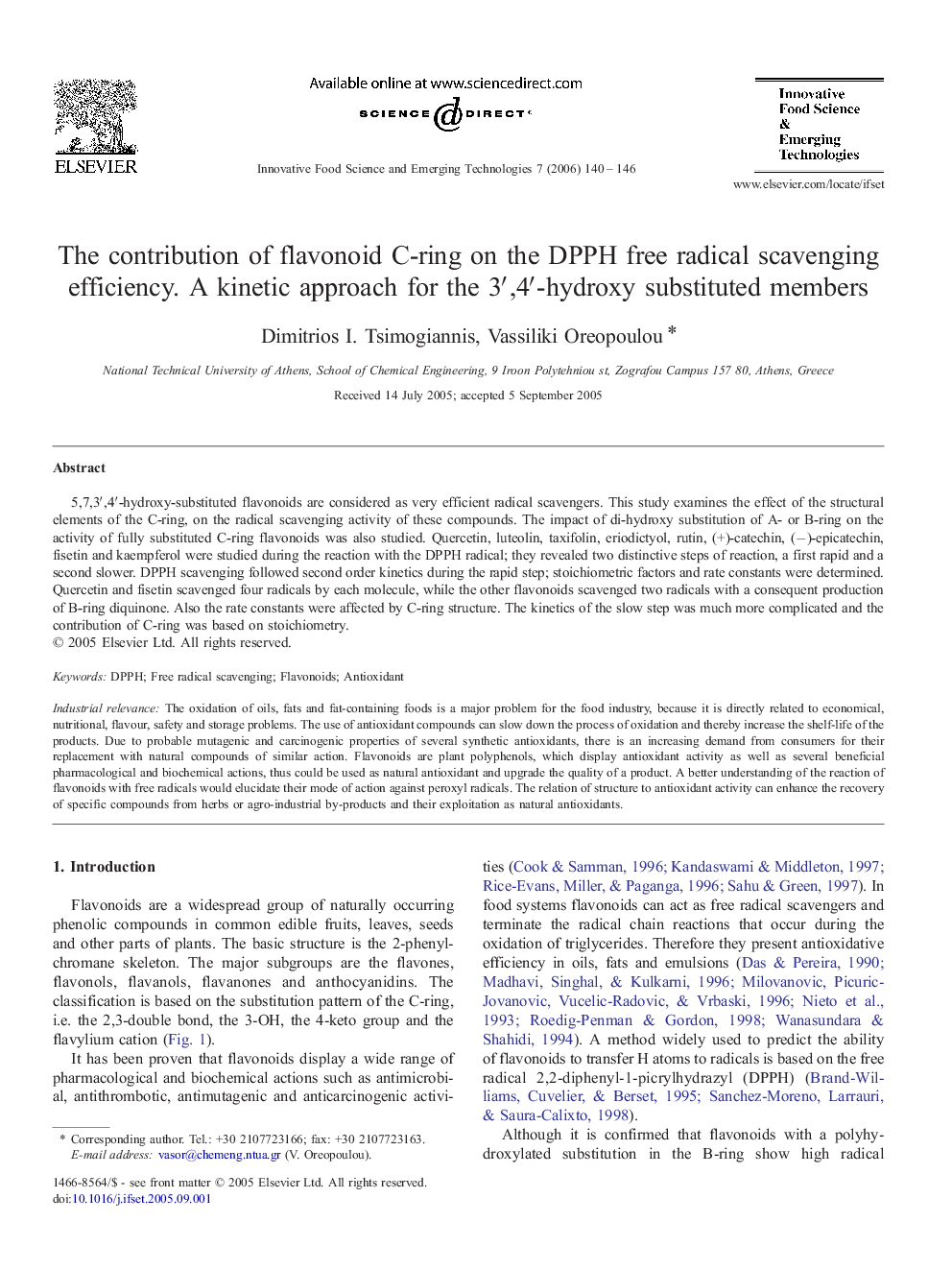| کد مقاله | کد نشریه | سال انتشار | مقاله انگلیسی | نسخه تمام متن |
|---|---|---|---|---|
| 2087405 | 1545555 | 2006 | 7 صفحه PDF | دانلود رایگان |

5,7,3′,4′-hydroxy-substituted flavonoids are considered as very efficient radical scavengers. This study examines the effect of the structural elements of the C-ring, on the radical scavenging activity of these compounds. The impact of di-hydroxy substitution of A- or B-ring on the activity of fully substituted C-ring flavonoids was also studied. Quercetin, luteolin, taxifolin, eriodictyol, rutin, (+)-catechin, (−)-epicatechin, fisetin and kaempferol were studied during the reaction with the DPPH radical; they revealed two distinctive steps of reaction, a first rapid and a second slower. DPPH scavenging followed second order kinetics during the rapid step; stoichiometric factors and rate constants were determined. Quercetin and fisetin scavenged four radicals by each molecule, while the other flavonoids scavenged two radicals with a consequent production of B-ring diquinone. Also the rate constants were affected by C-ring structure. The kinetics of the slow step was much more complicated and the contribution of C-ring was based on stoichiometry.Industrial relevanceThe oxidation of oils, fats and fat-containing foods is a major problem for the food industry, because it is directly related to economical, nutritional, flavour, safety and storage problems. The use of antioxidant compounds can slow down the process of oxidation and thereby increase the shelf-life of the products. Due to probable mutagenic and carcinogenic properties of several synthetic antioxidants, there is an increasing demand from consumers for their replacement with natural compounds of similar action. Flavonoids are plant polyphenols, which display antioxidant activity as well as several beneficial pharmacological and biochemical actions, thus could be used as natural antioxidant and upgrade the quality of a product. A better understanding of the reaction of flavonoids with free radicals would elucidate their mode of action against peroxyl radicals. The relation of structure to antioxidant activity can enhance the recovery of specific compounds from herbs or agro-industrial by-products and their exploitation as natural antioxidants.
Journal: Innovative Food Science & Emerging Technologies - Volume 7, Issues 1–2, June 2006, Pages 140–146